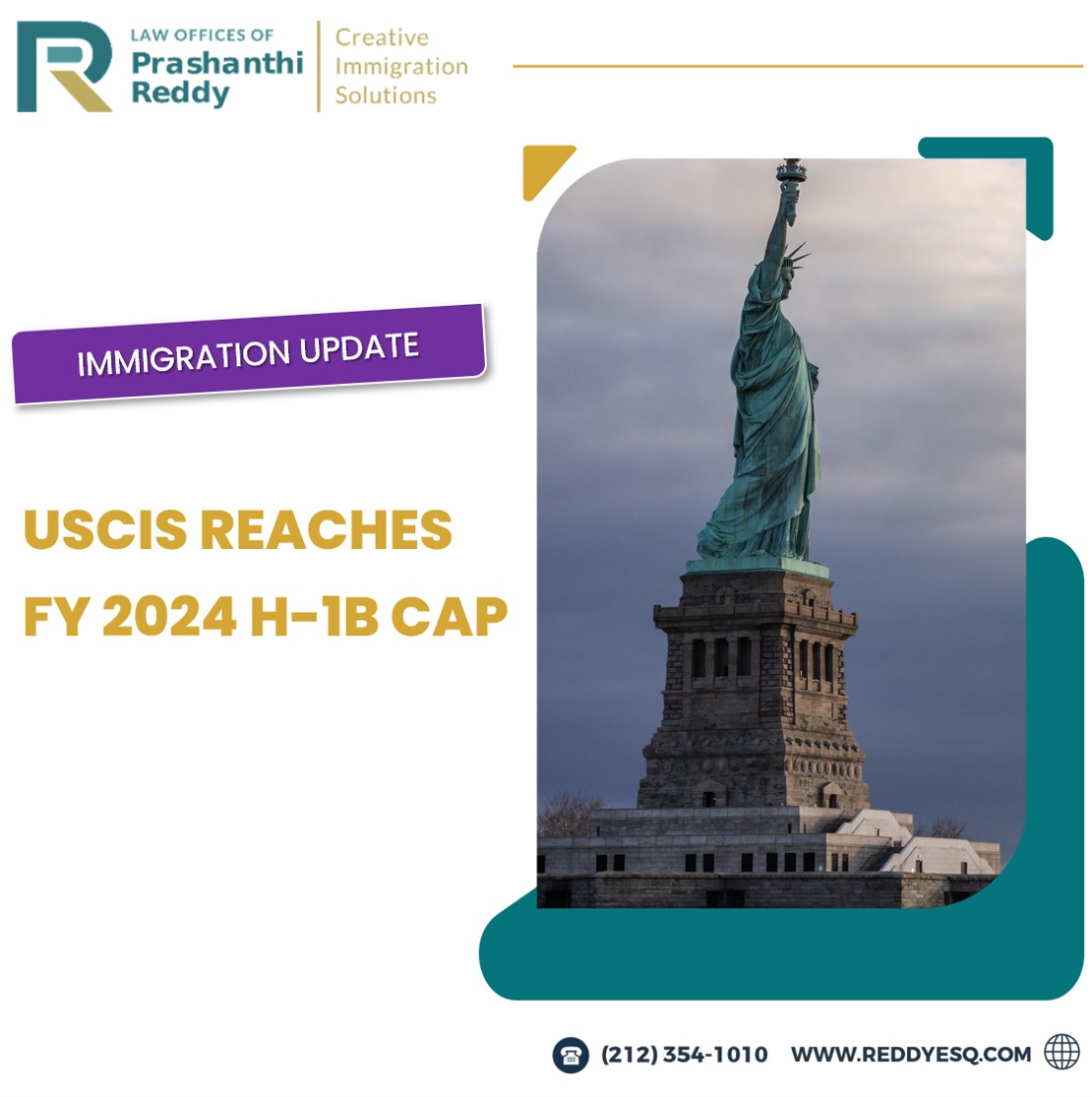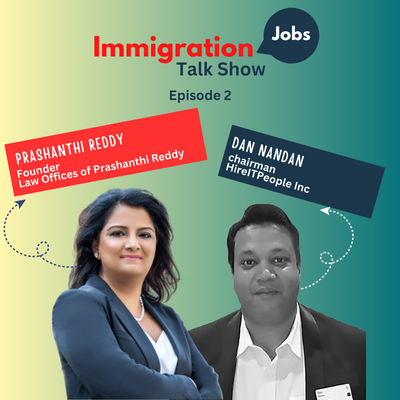On December 6, USCIS completed the pilot testing phase of the new electronic H-1B registration process and will implement the electronic process for the next H-1B cap season which will take place next year. The final rule for the new electronic registration process was announced on November 7, 2019. Employers who wish to file cap-subject H-1B petitions for the FY2021 are to register electronically and pay a fee of $10. The electronic registration is required for all H-1B cap-subject petitions including those eligible for the advanced degree exemption.
The electronic registration process requires basic information on potential beneficiaries and the company they will be employed at. The initial registration period for the next H-1B cap season will be from March 1, 2020 to March 20, 2020. If the USCIS receives more registrations than needed, the USCIS will randomly select the number of registrations needed to meet the cap. Selected registrations are eligible to file H-1B petitions. According to the USCIS, this new electronic registration seeks to streamline the H-1B petition processing through the reduction of paperwork and data exchange. Also, the new electronic registration seeks to reduce cost for employers as registrations that are not selected during the random selection process need not go through the entire petitioning process. However, since this will be the first implementation of the electronic registration process, future challenges are yet to be seen.
The USCIS proposes to select registrations by March 31, 2020. Employers with selected registrations will be notified after the selection process. From there, employers can file an H-1B cap-subject petition within a defined filing period. As only selected registrations are eligible for petition filing, this may hopefully reduce the number of petitions employers need to file.
Step-by-step instructions on completing the new electronic registration process as well as key dates & timelines are to be expected on the USCIS as the registration period draws close.
REQUIRED INFORMATION:
As already mentioned, petitioners are required to provide basic information on the prospective employee and the petitioning company. According to information publicly released by the USCIS, the following information will be demanded:
1) Petitioning company’s legal name
2) Petitioning company’s EIN (Employer Identification number)
3) Petitioning company’s U.S. office address
4) Authorized signatory’s legal name, title and contact information
5) And if applicable, the Doing Business As names of the petitioning company
6) Prospective employee’s legal name
7) Prospective employee’s gender
8) Prospective employee’s date of birth
9) Prospective employee’s country of birth
10) Prospective employee’s country of citizenship
11) Prospective employee’s passport number
12) Prospective employee’s eligibility for the advanced degree exemption. Does the beneficiary have a master’s or higher degree from an American institution of higher education?
BRIEF HISTORY :
Earlier this year on January 31, 2019, the USCIS published a final rule which made significant changes to the H-1B cap-subject visa program. Changes included the reversal of the random selection process as well as the introduction of an electronic registration requirement, which is to take place before the actual filing of petitions. While, the rule was effective as of April 1, 2019, the electronic registration process was not implemented for the FY2020 H-1B cap season in order to complete testing of the new electronic registration system.
In September 2019, the USCIS proposed a $10 fee to be paid by petitioners for each electronic registration. This proposed rule was finalized on December 6, 2019.
OTHER INFORMATION ON THE NEW REGISTRATION PROCESS:
What is not required for electronic registration?
1) A Labor Condition Application (LCA) is not required as part of the registration process. However, applicants can prepare an LCA before the electronic registration process.
2) Information on the position offered to the prospective beneficiary is not required as part of the registration.
Can attorneys submit electronic registrations on behalf of clients?
Provided they have a Form G-28 submitted for the client, attorneys can submit the registration for that client.
When does the registration process start and how long is the registration window?
The initial registration period opens on March 1 and remains open to March 20, 2020.
Can the registration be drafted before the initial registration window?
So far there is no information pertaining to whether the registration can be drafted before the initial registration period.
Can a registration be edited after submission?
While registration cannot be edited after it has been submitted, it is likely that a registration can be deleted, re-drafted and re-submitted within the initial registration window. Also, a registration can be edited several times during drafting.
Can additional beneficiaries be added to registration after submission?
Submissions of more beneficiaries can be submitted within the registration window.
How will the registration fee be paid?
A non-refundable registration fee of $10 is to be paid for each registration. This fee is to be paid using the pay.gov portal. Acceptable payment options include debit cards, credit card, and payments made from a (savings or checking) bank account. ACH fees will not be charged. Additionally, registrants don’t need to have a pay.gov account to submit payments. Lastly, payments cannot be made using a certified bank check, money order, or cash.
Can payment be made for several registrations simultaneously?
Registrations can make batch payments for several registrations at one time. In such a case, corporate and payment information needs to be entered once for all the registrations in the batch. However, both the payment and corporate information will not carry over to subsequent registrations.
Can beneficiaries pay the registration fee?
Registrants and G-28 reps can pay for the registration via the pay.gov portal. According to the final rule, payment is the responsibility of petitioning employers and not the beneficiary.
How will the USCIS notify registrants of selection in the random selection process?
It is yet to be known how registrants will be notified if their registration is selected, however, it is likely notification regarding the selection of registration will be done through the myUSCIS portal.
If registration is selected when can the petitioning employer submit an H-1B petition to USCIS?
If registration is selected, the petitioner has 90 days to submit an H-1B petition to the USCIS, starting from the date on which the registration was selected.
What happens when registration is selected but a petition is not submitted?
When registration is selected, but a petition is not submitted, the registration will be flagged for fraud. However, it is unclear how the DHS will handle cases where petitions are not filed for legitimate reasons.
If a selected registrant has a bona fide reason for delaying a filing past 90 days, how does the registrant communicate this to USCIS?
It is yet to be known the exact mechanism for requesting longer than the minimum 90 day filing period as the USCIS has not officially announced if it will accept nunc pro tunc requests along with a late filing.
Will a paper filing option for the electronic registration process be available?
As per the information available from USCIS, all registrations must be done electronically.
How does the registration process affect H-1B cap-gap benefits?
The electronic registration does not affect H-1B cap benefits as H-1B cap benefits are only attached upon filing the H-1B cap petition.
How will technical issues that come with the registration process be handled?
Presently, it is unknown how the USCIS plans to handle technical issues that arise while completing and submitting electronic registration. We will keep you informed of any new updates.
CONCLUSION:
Since the electronic registration process is a new feature added to the H-1B cap season, it is important to remain vigilant to any changes and announcements concerning the registration process. We hope to keep you updated with any new information.
Since the earlier electronic registration period means an earlier start to the H-1B cap season, employers must prepare earlier. Additionally, since this will be the first implementation of the electronic registration process, employers need to brace themselves for any unforeseen challenges. If you plan on filing H-1B cap-subject petitions for the fiscal year of 2021, it is prudent to seek legal counsel. The Law Offices of Prashanthi Reddy is always available to guide employers and organizations through the entire H-1B registration and petitioning process.
Sources :
- AILA. (December 17, 2019). Frequently Asked Questions Regarding the New Electronic H-1B Registration Process.
- Department of Homeland Security (DHS). (January 31, 2019). Registration Requirement for Petitioners Seeking To File H-1B Petitions on Behalf of Cap-Subject Aliens. Retrieved December 7, 2019, from https://www.govinfo.gov/content/pkg/FR-2019-01-31/pdf/2019-00302.pdf
- AILA. (December 20, 2019). Featured Issue: H-1B Registration Tool. Retrieved December 20, 2019, from https://www.aila.org/advo-media/issues/all/h1b-registration-tool
- AILA. (January 31, 2019). USCIS Issues Final Rule Governing Cap-Subject H-1B Petitions. Retrieved December 20, 2019, from https://www.aila.org/infonet/uscis-final-rule-on-changes-to-the-h-1b-lottery
- USCIS. (December 6, 2019). USCIS Announces Implementation of H-1B Electronic Registration Process for Fiscal Year 2021 Cap Season. Retrieved December 20, 2019, from https://www.uscis.gov/news/news-releases/uscis-announces-implementation-h-1b-electronic-registration-process-fiscal-year-2021-cap-season






